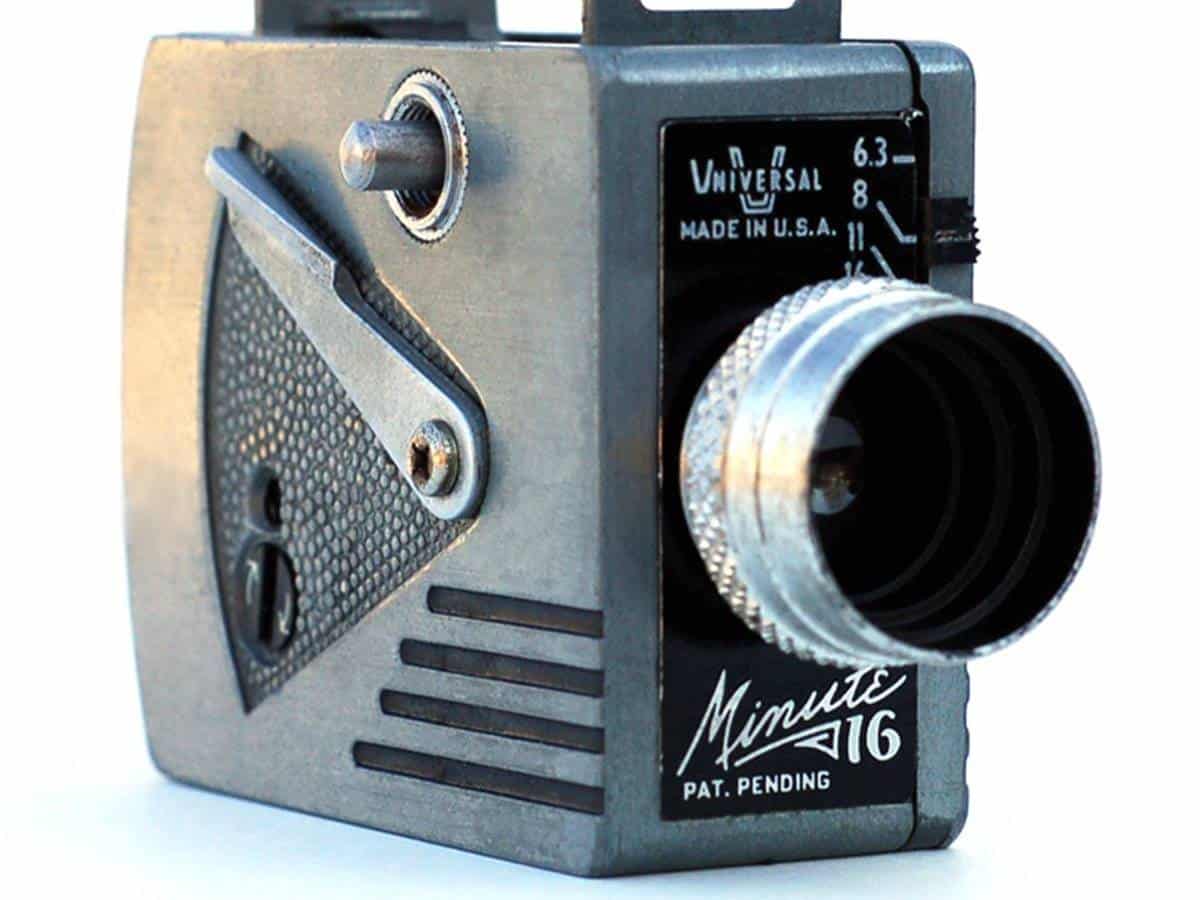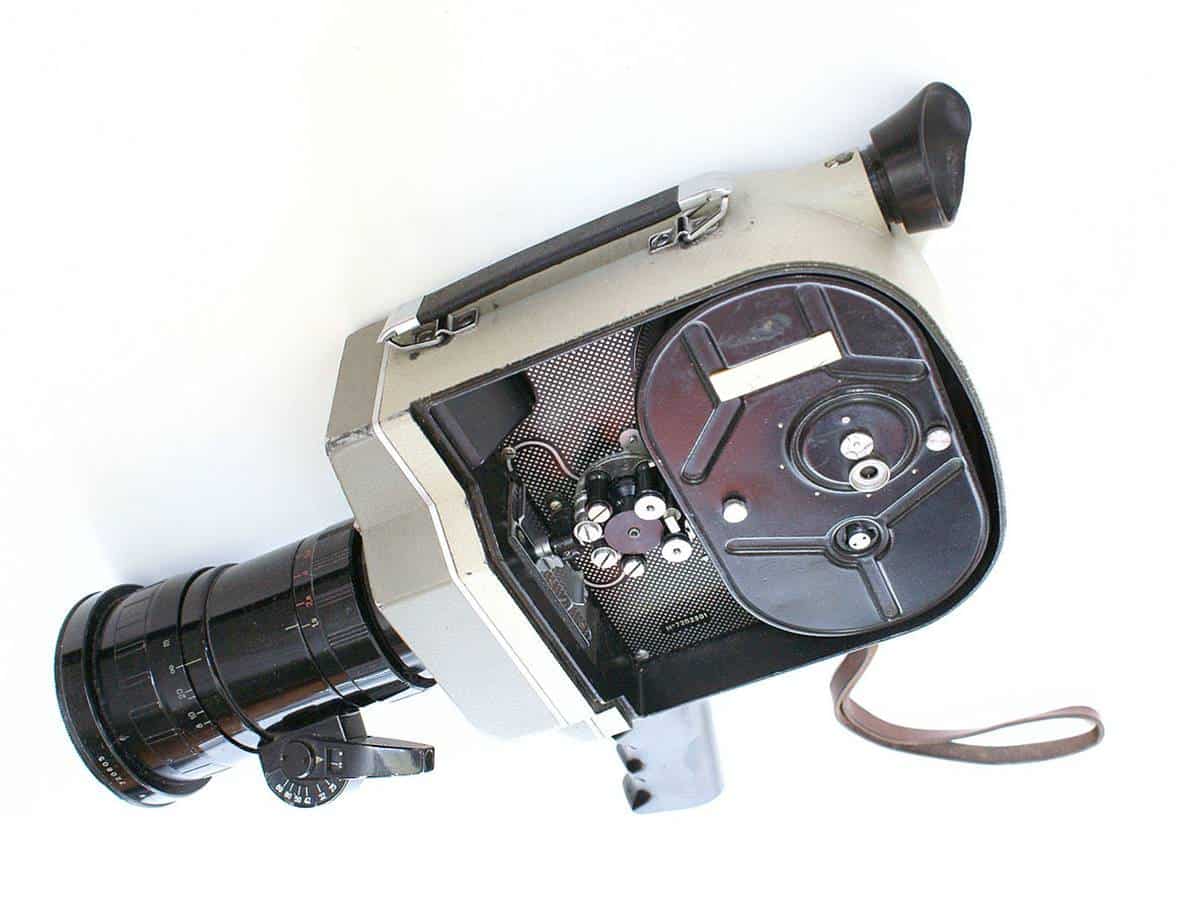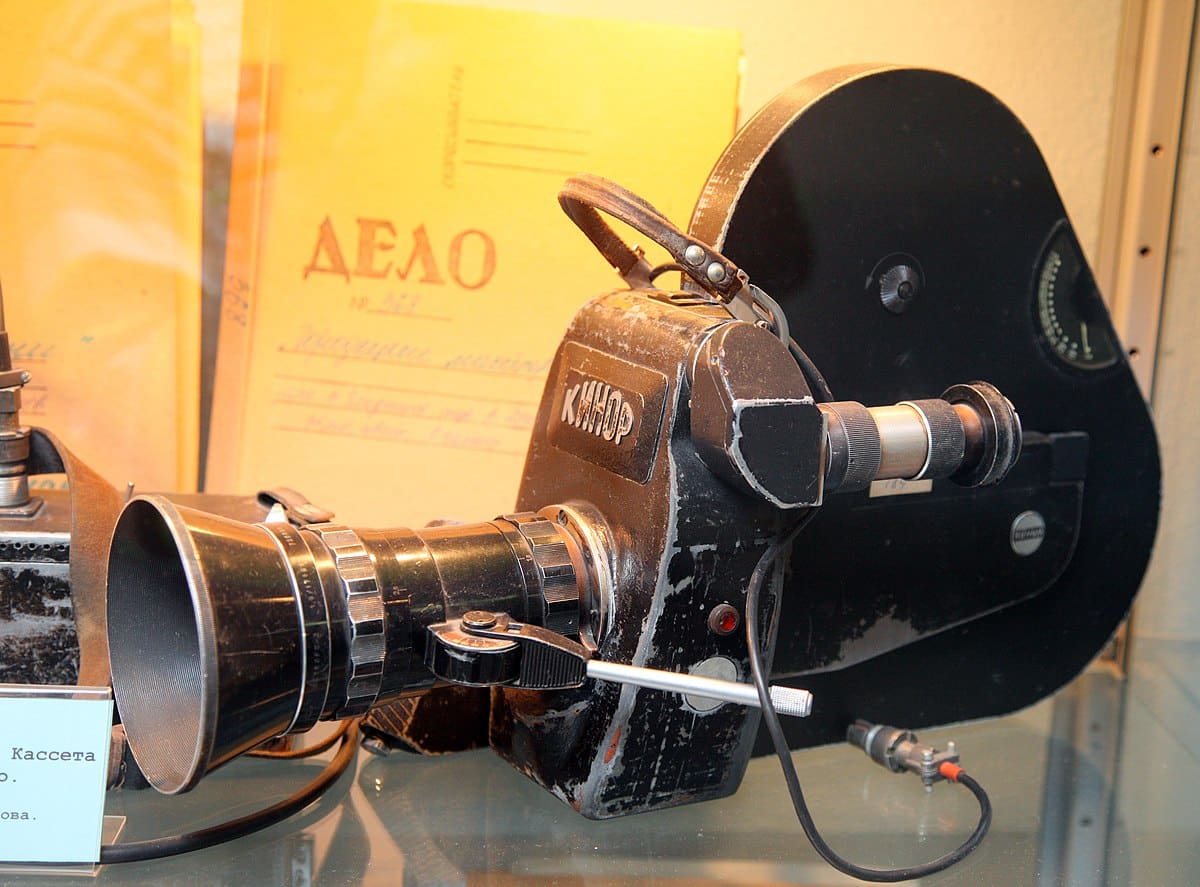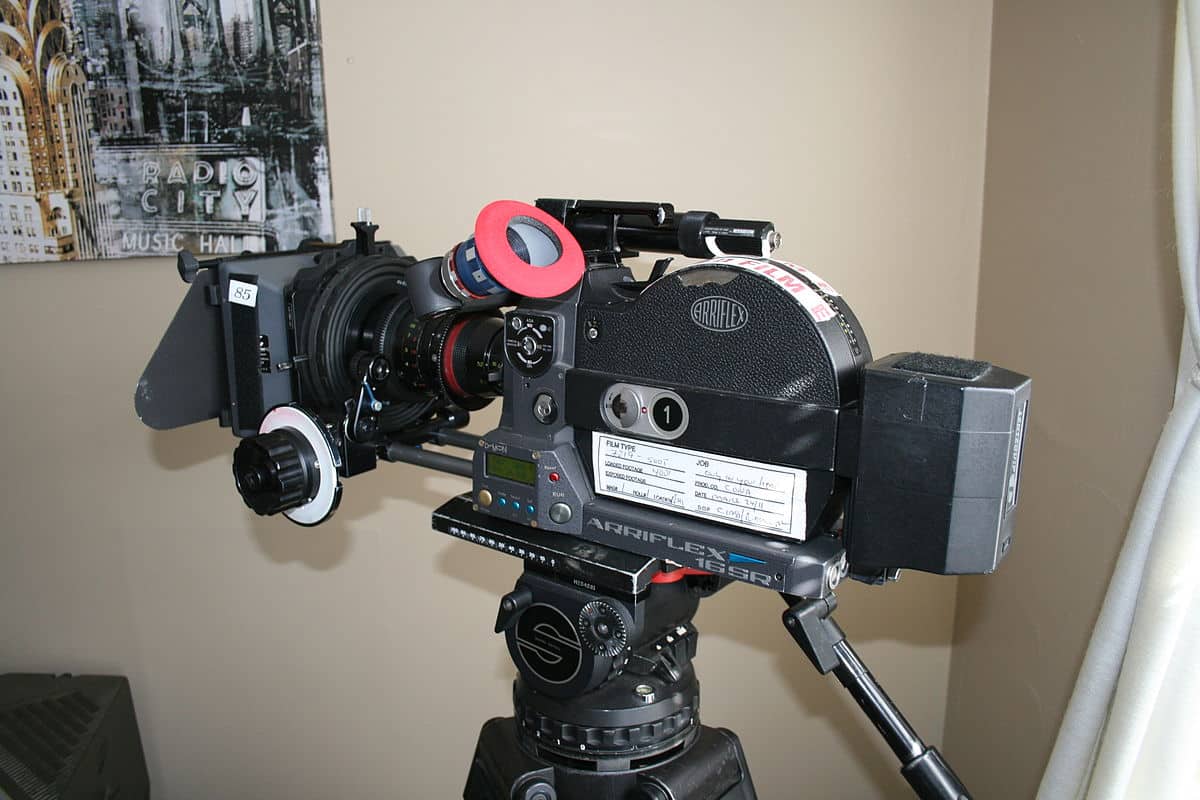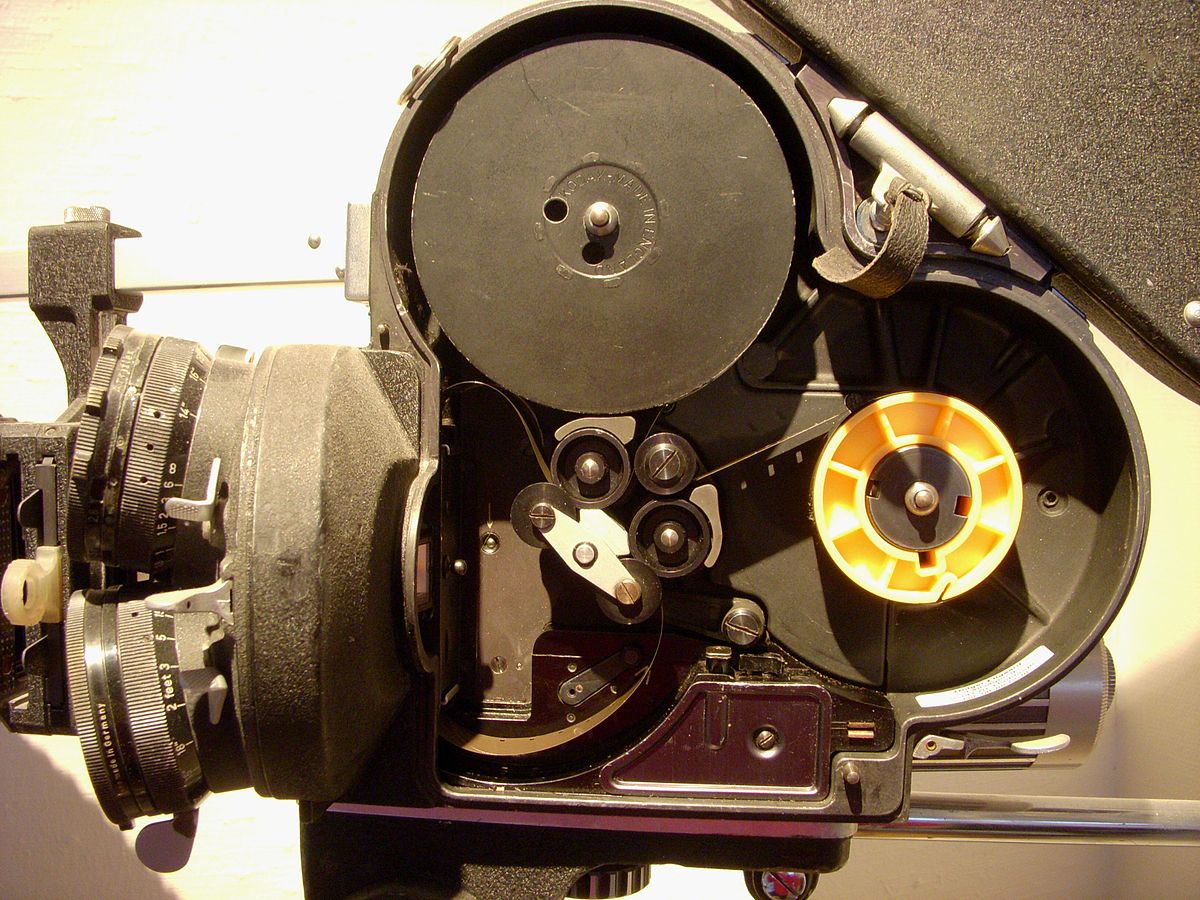16mm film is a film 15.95 (±0.025) mm wide with one or two rows of perforation. It is widely used in modern filmmaking with small budgets. In this article, we’ll discuss the history, features, and usages of 16mm film.
It was recently used by cinema projectors and in educational institutions for film screenings with small audiences. In addition, 16mm motion picture film was used in research applications such as high-speed cinematography.
A 16-mm film is considered a double film with a width of 32 mm, intended for replicating films in this format with subsequent cutting.
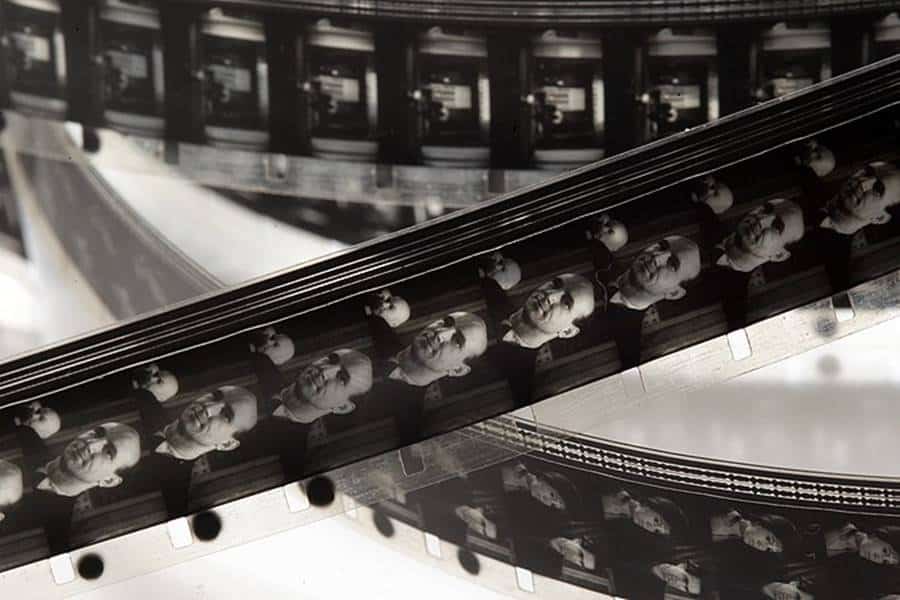
Features of 16mm Film
Eastman Kodak released narrow film strip width of 16mm on a non-combustible diacetate substrate in 1923 as an alternative to the 9.5mm amateur film “Pathe-Baby” for French studio “Pathe.” Attempts by the two companies to agree on a standard format were unsuccessful, and for some time, the standards existed in parallel. As a result of the successful introduction of sound on 16mm film and the popularity of the first color reversible film, Kodachrome, this format has supplanted its French competitor.
The fundamental difference from films intended for professional cinema, in addition to the substrate material, was the design of film projectors designed for the same charge of a thin film as in a film camera: with an emulsion to the lens. It is because the contact printing process was not initially envisaged for amateur cinema, which involves the use of reversible film. Therefore, when replicating 16mm film prints, optical printing through an opposing substrate is used to obtain a direct image on the screen.
With a perforation pitch of 7.62mm (for the positive film), the size of a standard 16mm frame is 10.05×7.45mm. The dimensions of the frame window of the cinema projector are somewhat smaller: 9.45×7.05mm.
The aspect ratio of such a film is close to the academic one and is 1.34:1. Perforation is located opposite the inter-frame gaps, and its pitch coincides with the frame pitch.
The first 16mm film was produced only with double-sided perforation. In 1932, due to the spread of sound films, one row of perforations was abandoned, and all equipment began to support one-sided perforation.
Films are supplied with double-sided perforation, which is not intended for printing film prints with phonograms and is suitable for high-speed filming.
Some negative and reversible grades with one-sided perforation were supplied with two magnetic tracks: a wide one located in place of the missing row of perforations and a narrow “balancing” one at the opposite edge.
In Russia, 16mm film was widely used, and the location of the frame and soundtrack on film prints was regulated by GOST 25704-83.
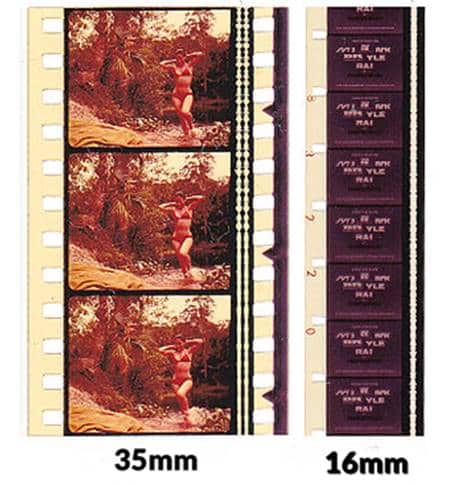
Optical Tracks
Negative and reversible 16mm film is provided with footage numbers at 20 frame intervals for later editing. In Soviet cinema, the interval between the footage numbers of the same varieties was 40 frames.
To replicate 16mm film prints, 32mm film with two rows of perforations was used. At the same time, two images of the same frame were obtained from one 35mm countertype by optical reproduction on different halves of the film.
After printing and laboratory processing, the film was cut lengthwise, giving two identical 16mm film prints with one-sided perforation and optical or magnetic combined phonogram.
This technology made it possible to reduce the cost of printing, and unique film copiers were produced for it. Wide-screen films were reprinted on the same movie using the 23YUTO-1 apparatus with pan-scanning. Outside the USA, printing on 16mm film of wide-screen film prints with anamorphic frame has gained some popularity.
You may also like to read: Filming: A Step by Step Guide for Beginners
Advantage of 16mm to Cinema & Film Industry
Despite its tiny footprint, over a decade, the new format has become widespread in professional cinema in industries where compactness and portability are more important than image quality. Compared to “normal” 35mm film, the narrow film allows at least half the weight and dimensions of the cinema equipment and also reduces costs: the cost of one part of a narrow film is three times lower than that of a conventional movie.
The weight of a 16mm film is 5.5 times lower than usual, making it much easier to transport. 16mm cinema projectors, as a rule, do not require stationary installation and qualified maintenance, allowing you to deploy a cinema installation in poorly adapted places quickly.
Before the general ban of nitrate 35mm film in 1948, an essential advantage of narrow-film films was their fire safety and the possibility of organizing a film show in unequipped halls. Therefore, copies of most films were additionally printed in a cheap 16mm version for cinemas and educational institutions.
In the United States, these films could be rented for home viewing. 16mm film was also used in professional film distribution: at the beginning of 1983, the share of paid cinema installations equipped with equipment of this format reached 18.7% of the total.
Before the advent of camcorders and video recorders, 16mm film cameras were widely used in documentary and applied cinematography and for filming television reports since the quality of the resulting image was sufficient for standard-definition television.
In addition to convenience and mobility, narrow-film cameras turned out to be less noisy and better suited for simultaneous shooting: some of them allowed creating a combined phonogram directly on the filmed film.
Narrow-film mixed cameras were mass-produced by the American companies Auricon, Cinema Products, and Mitchell. For the operational preparation of news stories, the reversible film could be used, produced only in narrow formats, and suitable for telecine projection immediately after laboratory processing. Filmmaking technology enjoyed some popularity, providing shooting on 16mm reversible film with subsequent optical printing of 35mm duplicate negatives, bypassing inter-positive.
Due to the high quality of color rendition and the fine grain of the reversible films, this method benefited due to the lightness of low-noise narrow-film film cameras and auxiliary camera equipment. With the advent of the Super 16 frame, filming striped films on this format’s negative became widespread.
In 2008, 24% of all feature films worldwide were shot on 16mm film. The famous movie “The Blair Witch” was shot using a narrow-film mixed camera “Cinema Products’ CP-16A“.
16mm film is incredibly widely used for shooting television series. For example, all nine seasons of the “Clinic” series were filmed with Super-16 narrow-film cameras.
You may also like to read: Newborn Photography: Do You Know How to Properly Photograph Newborn Babies?
The small frame pitch and the mass of photographic material being moved have made the narrow film the preferred choice in some applications. In video recorders, 16mm film provided the complete recording of a television frame due to a special grab with an accelerator, unsuitable for a 35mm analog.
Another area where the 16mm format has proved to be more beneficial than more comprehensive formats is high-speed filming. High speeds are available not only with continuous motion of the film with optical compensation but even with intermittent ones, making the resulting material suitable for conventional cinematography.
The benefits of the small size of 16mm cameras have been actively used in professional sports photography, allowing you to shoot from points inaccessible to 35mm equipment.
During the 1976 Winter Olympics, the 35mm film under review was filmed with two miniature 16mm Cinema Products GSAP cameras attached to some athletes’ skis during ski jumping.
16mm film has become popular in amateur cinema, becoming especially popular after the release in 1935 of the first color multilayer Kodachrome film of this format.
Kodak had mastered producing the world’s first 16mm color film with the lenticular screen seven years earlier. However, despite these advances, the more economical 8mm film gradually replaced 16mm from the amateur cinema after its introduction.
16mm Film Equipment
The first 16mm motion picture cameras were released by Eastman Kodak simultaneously as the film. They assessed the prospects of the new format; Bell & Howell, Siemens, Zeiss Ikon, and other enterprises specializing in precision mechanics quickly set up the production of the corresponding equipment.
The most famous of the early models are Filmo and Cine Kodak. The Swiss company Bolex was one of the first professional class 16mm devices.
Now the production of amateur equipment has been discontinued. Photo Sonics manufactures a camera for accelerated filming at up to 1000 frames per second. In the 2000s, a class of digital cinema cameras with sensor size emerged, which coincides with the Super-16 frame, and is suitable for 16mm shooting optics. The most famous of them is the Swedish Bolex D16 and Ikonoskop.
The first 16mm Eastman Kodak marketed sonic cinema projector in 1936. Since then, this format’s vast majority of cinema projection equipment was produced with an optical sound-reading system, and some models were supplemented with a magnetic sound unit.
Unlike amateur 8mm film projectors, these devices were supplied only as part of a cinema installation, including an autotransformer, sound amplifier, loudspeaker, screen, and gluing press. Portable 16mm cinema projectors were designed to connect an external amplifier or were equipped with a portable sound reproducing device in a removable case.
The most advanced design was provided by the Era-101 and Era-103 automatic film projectors, equipped with automatic film charging and remote control. Stationary projectors 16PS-1 “Chernomorets” and KPS-16-2 s were produced for small cinemas.
Xenon lamp, designed for installation in a particular control room and continuous display by two posts. In addition, a 16-mm UP-1 attachment was produced, intended for demonstration of narrow-film films with stationary 35mm and large-format film projectors.
Super-16 and 16mm Standards
In 1969, Swedish cinematographer Rune Erikson proposed a production format – “Super 16” on 16mm film with one-sided perforation. It was designed for subsequent enlargement during optical printing of bonded film prints on 35 mm film.
The new format is unsuitable for printing on 16mm film since its frame’s width has been increased due to the refusal to reserve space for the soundtrack from one edge of the film. Reworking standard cameras obtained the first Super-16 cameras in film studios, but after a while, many manufacturers launched industrial production of equipment: film equipment, film copiers, editing tables, etc. The Super 16 frame is currently accepted as an international SMPTE standard and the standard 16mm frame.
The format is now widely used in the USA, Russia, and abroad for filming television series using the Digital Intermediate technology since the information capacity of such a frame on modern types of film is sufficient for high-definition television.
Ultra-16
They were first used by cinematographer Frank DeMarco on-screen tests for Pi. The “Ultra-16” format is also a production format and differs from the “Super-16” by the symmetrical arrangement of the frame relative to the film. Frame “Ultra-16” is obtained by the standard magnification of 0.77mm on each side in width. In this case, the corners of the exposed area partially overlap the perforation.
The effective area of the frame with an aspect ratio of 1.85:1 occupies the entire height between the perforations and is 11.8×6.25mm. From it, it is possible to optically print catheterized film copies, as well as obtain the high-definition video in 16:9 format.
The advantage of the format lies in the more superficial alteration of standard cinematographic equipment than for the “Super-16” with the same frame area. For framing, the traditional viewfinder can be used since the framing window is bored symmetrically.
All 16 mm lenses remain usable without lateral displacement of the mount relative to the film axis. Moreover, viewing the resulting film is possible with a standard film projector with a slight cut of the image on the right and left, and after the film channel is finalized, the entire frame is visible.
Unlike Super-16, the new frame size is not accepted as an international standard and is used unofficially by filmmakers. Filming equipment of this format is not produced commercially but is being converted from the usual one.
